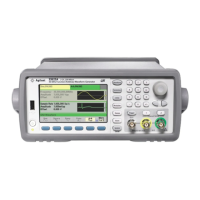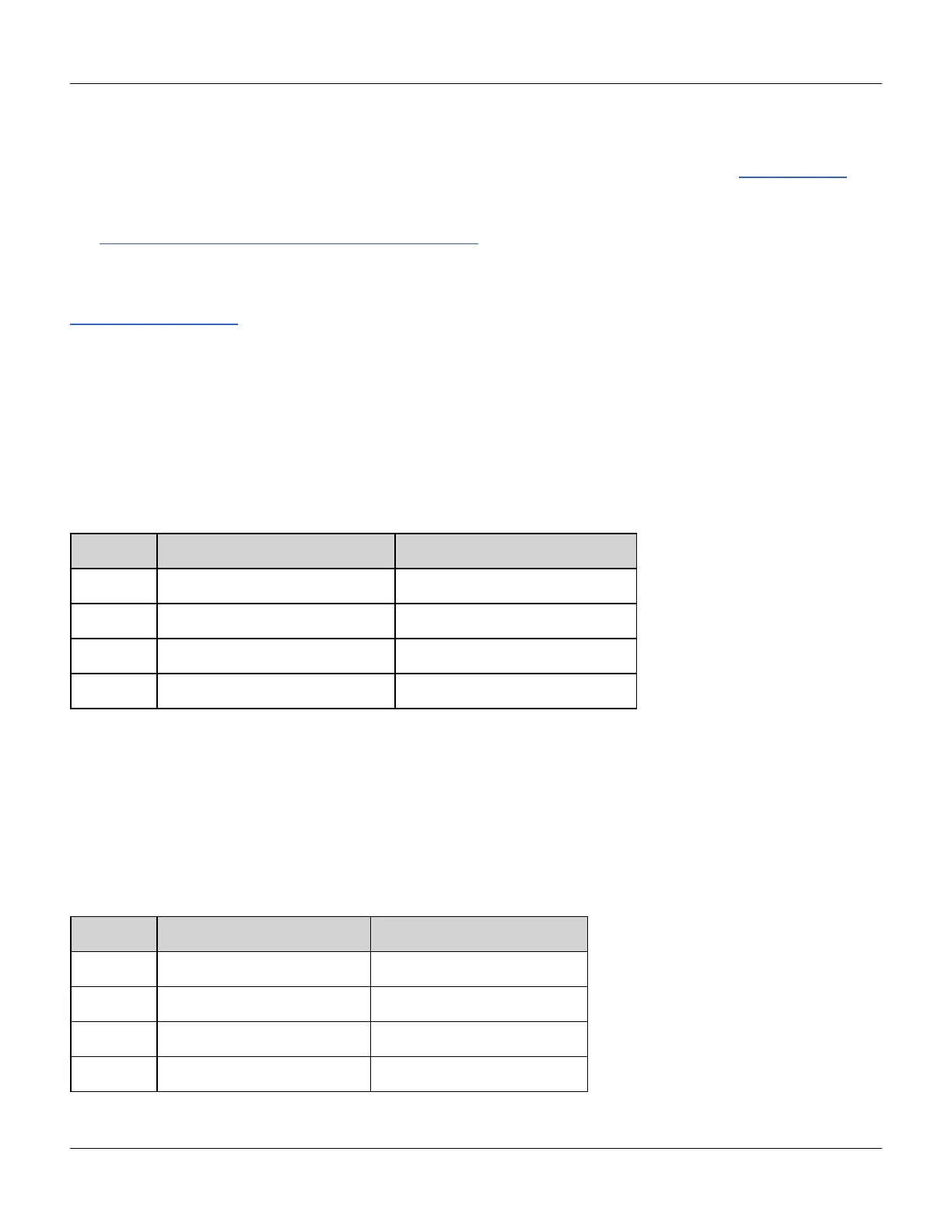Frequency-Shift Keying (FSK) Modulation
Frequency-Shift Keying (FSK) Modulation
You can configure the instrument to "shift" its output frequency between two preset values using FSK modulation. The
rate at which the output shifts between the two frequencies (called the "carrier frequency" and the "hop frequency") is
determined by the internal rate generator or the signal level on the rear-panel Ext Trig connector.
See Front Panel Menu Operation - Output an FSK Waveform for details on FSK using the front panel.
To Select FSK Modulation
FSKey:STATe {OFF|ON}
l Only one modulation mode may be enabled at a time. Enabling FSK turns off the previous modulation mode.
l You cannot enable FSK when sweep or burst is enabled. Enabling FSK turns off sweep and burst.
l To avoid multiple waveform changes, enable modulation after configuring the other modulation parameters.
FSK Carrier Frequency
[SOURce[1|2]:]FREQuency {<frequency>|MIN|MAX}
The maximum carrier frequency varies by function, as shown below. The default is 1 kHz for all functions.
Function Minimum Carrier Frequency Maximum Carrier Frequency
Sine 1 µHz 30 MHz
Square 1 µHz 30 MHz
Ramp/Tri. 1 µHz 200 kHz
Pulse 1 µHz 30 MHz
l When the External source is selected, the output frequency is determined by the signal level on the rear-panel Ext
Trig connector. When a logic low is present, the carrier frequency is output. With a logic high, the hop frequency is
output.
FSK "Hop" Frequency
[SOURce[1|2]:]FSKey:FREQuency {<freq>|MIN|MAX}
The maximum alternate ("hop") frequency depends on the function. The default is 100 Hz for all functions. The inter-
nal modulating waveform is a 50% duty cycle square wave.
Function Minimum Hop Frequency Maximum Hop Frequency
Sine 1 µHz 30 MHz
Square 1 µHz 30 MHz
Ramp/Tri. 1 µHz 200 kHz
Pulse 1 µHz 30 MHz
Agilent 33500 Series Operating and Service Guide 81

